University of Szeged
The University of Szeged (Hungarian: Szegedi Tudományegyetem, ![]()
Szegedi Tudományegyetem | |
 | |
| Latin: Universitas Scientiarum Szegediensis | |
| Motto | Veritas. Virtus. Libertas Truth. Bravery. Freedom and/or Where knowledge and challenge meet |
|---|---|
| Type | Public |
| Established | 1872 / 1921 |
| Budget | US$220 million |
| Rector | László Rovó |
Administrative staff | 2,200 |
| Students | 21,000 |
| Location | , |
| Campus | College town |
| Website | http://www.u-szeged.hu |
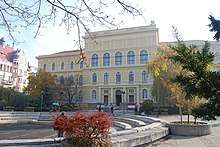
History

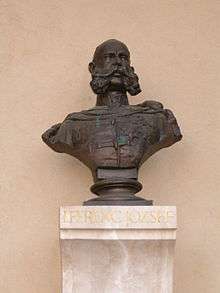
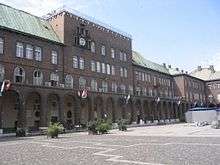
The predecessor to the modern university was the University of Kolozsvár (University of today's Cluj-Napoca), founded in 1872 by Emperor Franz Joseph I of Austria, which had to move to Hungary after the Treaty of Trianon in 1921, and was restarted in Szeged.[4]
Among its teachers were Albert Szent-Györgyi, one of the founders of the Faculty of Science, who received the Nobel Prize in Physiology or Medicine in 1937 for his discoveries in connection with Vitamin C.
Timeline
| Year | event |
|---|---|
| 1872 | Foundation of the University of Kolozsvár |
| 1921 | The "Franz Joseph" University moved to Szeged |
| 1951 | The Medical School was separated from the University and was established as an independent institution |
| 1962 | The University assumed the name of "Attila József" (JATE) |
| 2000 | Unification of institutions as the University of Szeged (SZTE) |
Name of the university (in Hungarian)
| Name | place | time | |
|---|---|---|---|
| 1 | Kolozsvári Tudományegyetem | Kolozsvár | (1872–1881) |
| 2 | Ferenc József Tudományegyetem | Kolozsvár | (1881–1919) |
| 3 | Ferenc József Tudományegyetem | Budapest | (1919–1921) |
| 4 | Ferenc József Tudományegyetem | Szeged | (1921–1940) |
| 5 | Ferenc József Tudományegyetem | Kolozsvár | (1940–1945) |
| 6 | Szegedi Tudományegyetem | Szeged | (1945–1962) |
| 7 | József Attila Tudományegyetem | Szeged | (1962–1999) |
| 8 | Szegedi Tudományegyetem | Szeged | (2000– ) |
Setting and architecture
Cathedral Square

Cathedral (Hungarian: Dóm) Square is one of the largest public spaces in Hungary, with a total area of 12,000 m² (similar to that of Venice's Saint Mark's Square). In 1920, all the buildings in the vicinity were torn down, giving way to the modern square, which was built according to the designs of the architect Béla Rerrich. The square is surrounded in a U-shape by archwayed buildings made of dark brown bricks. The buildings are shared by Szeged University, the College of Catholic Theology, the Seat of the Bishop and a university dormitory. The reliefs decorating the walls were made by Béla Ohmann. After the noon chimes, a musical clock (the work of Ferenc Csuri, a master watchmaker) brings models of famous University figures to life. 86 statues of prominent Szeged University figures line the walls of the archways.
Dugonics Square
%2C_Szeged-ja-1.jpg)
The main building of the University, built between 1872 and 1873 to the designs of Antal Skalnitzky and Ferenc Arleth, was moved to Dugonics Square in 1921. Before the Great Szeged Flood of 1879, the square was home to Szeged's wheat market. A fountain, built in 1979 on the 100th anniversary of the flood by István Tarnai, occupies the centre of the square. Also present is a statue commemorating the famous Hungarian poet Attila József, which was sculpted by Imre Varga in 1964. Festivals and concerts are often held in Dugonics Square, which is a popular hangout for students of the University.
Organisation
Szeged University has 12 primary faculties:
- Faculty of Agriculture – MGK
- Faculty of Health Sciences and Social Studies – ETSZK
- Faculty of Engineering – MK
- Faculty of Humanities and Social Sciences – BTK
- Faculty of Economics and Business Administration – GTK
- Faculty of Law and Political Sciences – ÁJTK
- Faculty of Medicine – ÁOK
- Faculty of Music – ZMK
- Faculty of Pharmacy – GYTK
- Faculty of Sciences and Informatics – TTIK
- Juhász Gyula Faculty of Education – JGYPK
- Faculty of Dentistry] – FOK
Research
There are 16 research groups supported by the Hungarian Academy of Sciences. Among other research areas: pharmaceutical chemistry, biotechnology & environmental technology. The University covers 700 research areas at 19 Doctoral Schools.[5]
The Attila József Study and Information Centre (Hungarian: József Attila Tanulmányi és Információs Központ – JATIK) is located near Szeged's city center and houses the university library, computer center, and lecture halls. The University plans to build another two faculties.
Enrollment
The University of Szeged has 21,000 university students, studying a total of 134 majors.
The SZTE, located in Szeged Hungary, offers 52 full-time degree programmes at Bachelor's, Master's and Doctoral level.[6]
Notable alumni and professors
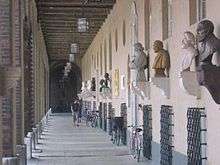
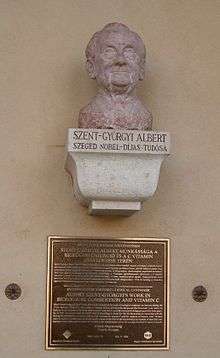
Nobel laureate
Humanities and Social Sciences
Faculty of Arts
- Dezső Csejtei, philosophy
- János Csengery, philosophy
- Zoltán Gombocz, philologist
- Sándor Imre, pedagogy
- Károly Marót, philosophy
- Sándor Márki, medieval history
- Ágoston Pável, ethnology
- Pupus Payne, author
- István Schneller, pedagogy
- Sándor Sik, hungarian literature
- Antal Szerb, author
- József Szinnyei, history of literature
- Hildebrand Dezső Várkonyi psychologist
Faculty of Law and Public Administration
- István Bibó, politics
- László Buza, international law
- Győző Concha, politics
- István Ereky, public administration
- Ferenc Finkey, criminal law
- Barna Horváth, sociology of law
- Sándor Kolosváry, private law
- János Martonyi, international economic law
- Csongor Istvan Nagy, competition law, conflict of laws, international economic law
- Ernő Nagy, public law
- Kelemen Óvári, history of law
- Ödön Polner, public law
- Elemér Pólay, Roman law
- Bódog Somló, philosophy of law
Natural Sciences
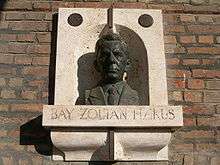
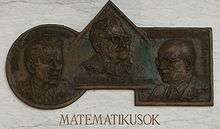
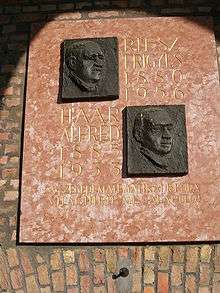
Faculty of Medicine
- József Baló, anatomy
- Gábor Fodor, chemistry
- Endre Hőgyes, pharmacy
- Béla Issekutz senior, pharmacy
- Miklós Jancsó senior, internal medicine
- Dezső Miskolczy, neurology
- István Rusznyák, internal medicine
Faculty of Sciences
- István Apáthy, zoology
- Zoltán Bay, physicist
- Jenő Cholnoky, geography
- Lipót Fejér, mathematics
- István Györffy, botanics
- Alfréd Haar, mathematics
- László Kalmár, computer science
- Béla Kerékjártó, geometry
- László Lovász, mathematics; Wolf Prize 1999, Knuth Prize 1999, Kyoto prize 2010.
- Tibor Radó, mathematics
- László Rédei, mathematics
- Frigyes Riesz, mathematics
- Brúnó F. Straub, biology
- Béla Szőkefalvi-Nagy, mathematics
Alumni students
- Krisztián Cser, opera singer, physicist
- Peter Heszler, physicist
- Attila József, poet
- Gyula Juhász, poet, journalist, educator
- László Bela Kish, physicist
- Miklós Radnóti, poet
- Mario Szenessy, author
- Mohammad Sharif Chattar, educationist, botanist, author, poet
Olympic athletes
- Natasa Janics, canoeing, gold medal
- Márton Joób, canoeing, gold medal
- Anita Márton, shot put, bronze medal
See also
- Open access in Hungary
- List of universities in Hungary
- List of University of Szeged people
Bibliography
- János Martonyi, József Ruszoly: A JATE története – A Szegedi Tudományegyetem múltja és jelene. Szeged, 1999.
- SZTE the Greatest Community in Town 2019 brochure - Directorate for International&Public Relations
References
- "Shanghai University Rankings". ARWU. Retrieved 30 March 2014.
- "QS University Rankings". QS. Retrieved 30 March 2014.
- "Budgetary Data". SZTE. Retrieved 30 March 2014.
- "The history of the University of Szeged". Archived from the original on 3 November 2011. Retrieved 7 November 2011.
- http://www.u-szeged.hu/english/doctoral-programmes
- https://www.u-szeged.hu/study-programmes